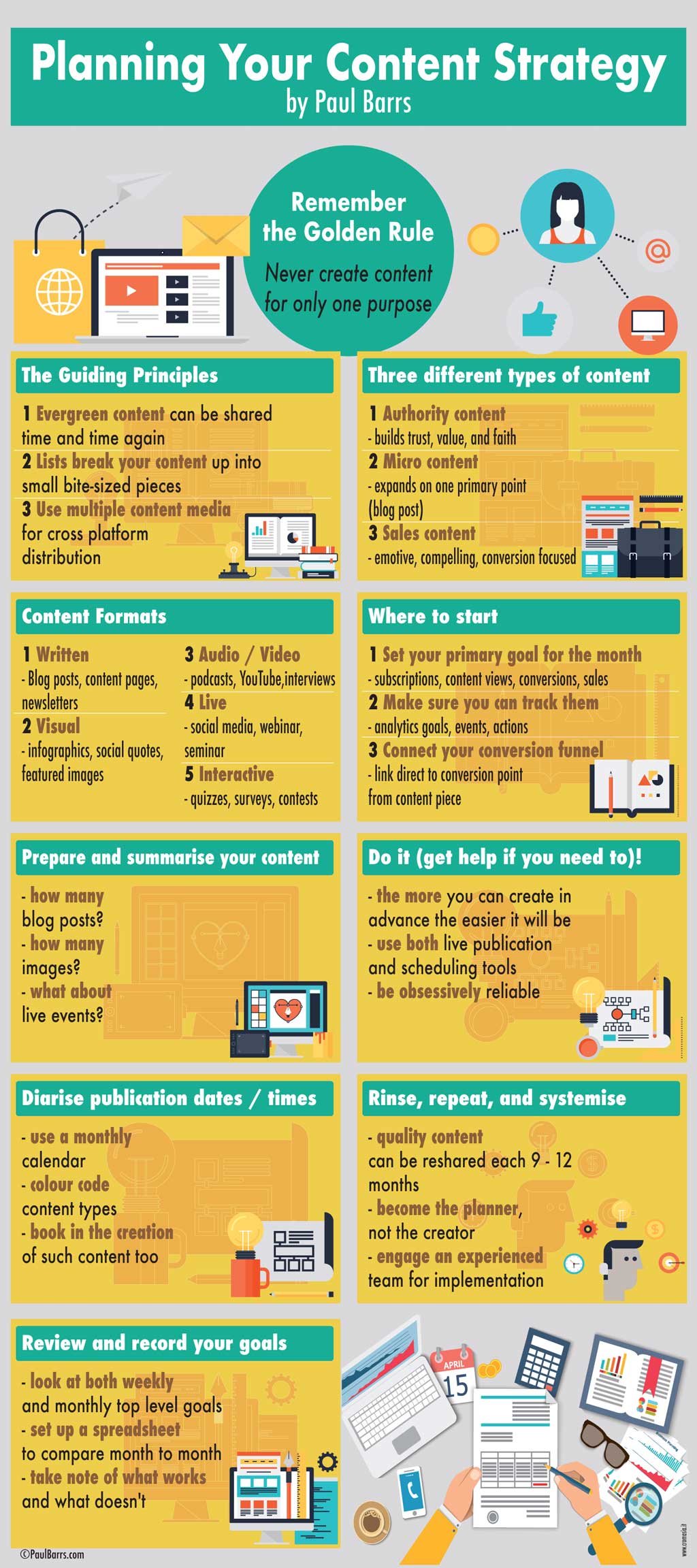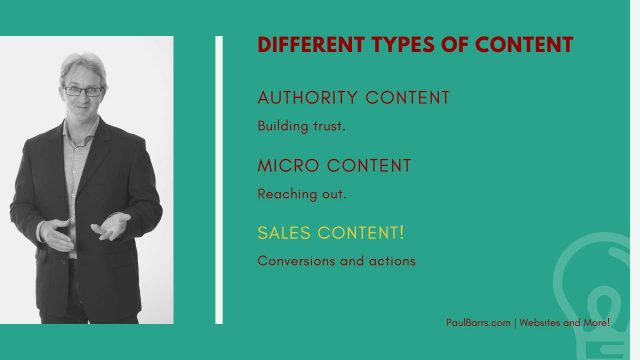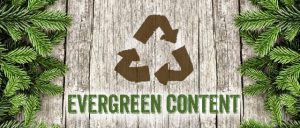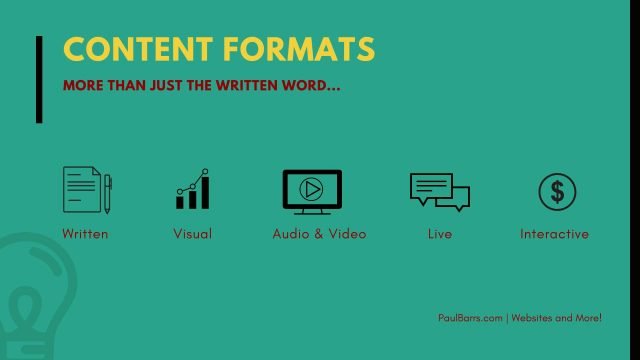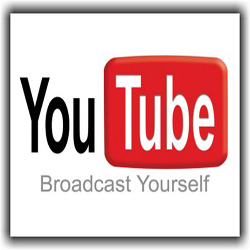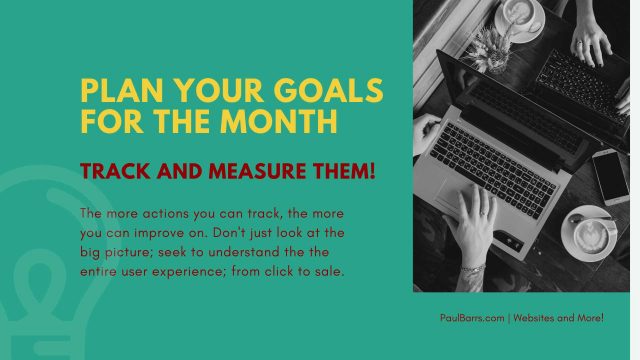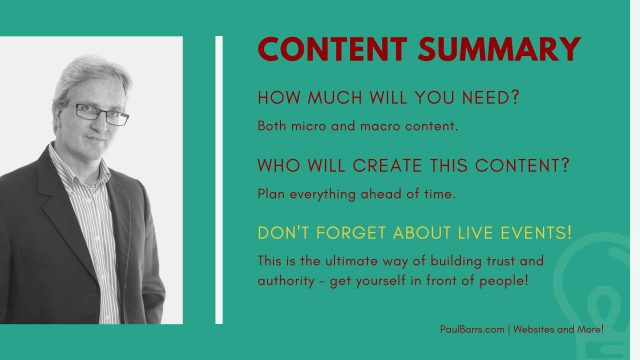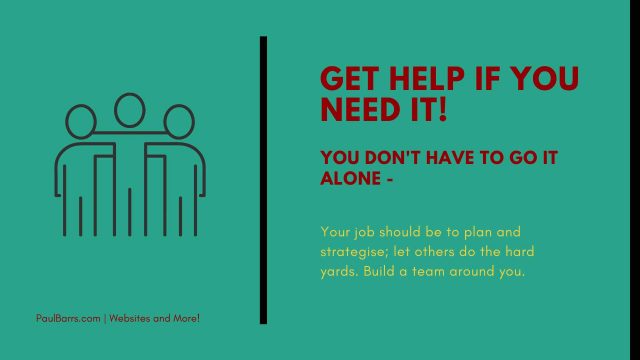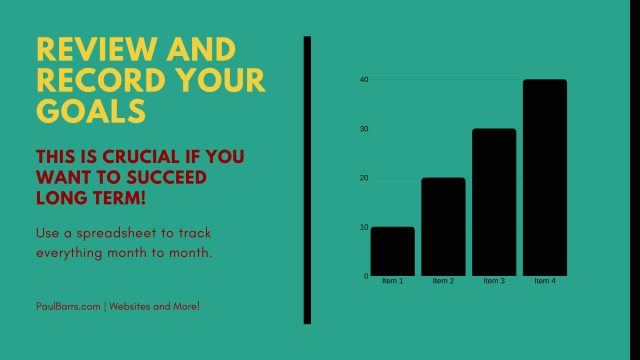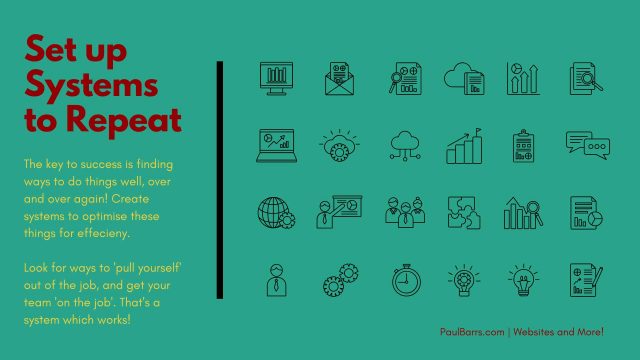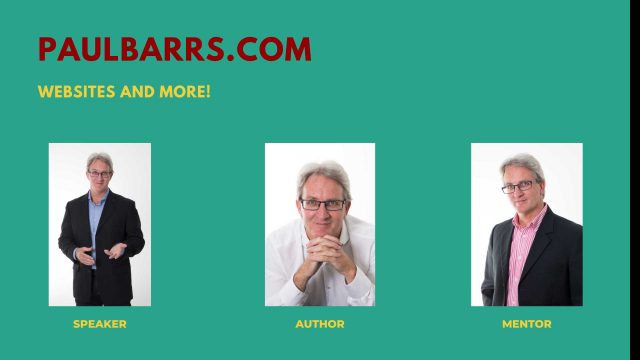20 May Planning Your Content Strategy for Sales and Success
Content is still king in the world of eBusiness; if you want to reach out to new people, you need content, if you want to inform old customers of new products, you need content – want to write an ad? Content! Need some new social images? Content!
It’s everywhere – and if you don’t plan it well, whatever marketing strategy you have in mind will fail. Learn how to get the most from your content in this month’s tutorial.
Need Help with Your Website? Request A Callback
See the end of the infographic for a transcript of the above video
Transcript
- Different Types of Content
- Content Formats
- Plan Your Goals For The Month
- Content Summary
- Schedule Your Publication Dates and Times
- Get Help If You Need It
- Review And Record Your Goals
- Set Up Systems To Repeat
Get Help with Your Website – Request A Callback
Good morning, good afternoon,and maybe I should even say good evening. Whatever time it is, wherever you are right now listening to this, hello and welcome. My name is Paul Barrs. Thanks for stopping by to listen to this month’s client training. Now we’re talking about content, all things content and helping you put together a dynamic content strategy. And you know as well as I do that content is what?
It’s king. It’s everything that we do on our website. It’s everything that we share in social or through a newsletter or even in print media. Content is what makes it all happen. But I also know that content can take quite some time to get together. And because of that time commitment, I’ve learned that that’s the reason why most people don’t create good content.
It’s just not, they think, worth the time and effort. Well, I’m here to change your mind. I’m here to show you a simple system that you can put into place to develop a powerful content strategy. So in this video, we’re going to cover the guiding principles, the foundations to good content. We’re going to talk about the different content types.
Different Types of Content
We’re going to talk about the authority content, the micro-content, the connection content. We’re going to talk about what you can do here and what you can do there and where this different content goes, and then how to actually plan it out so that it balances across the playing field, and then how to actually put it into place so it physically gets done.
I mean, these are the important things about content. Getting it done. Absolutely. So that’s what you’re going to learn in this video. I hope you grab a cup of tea or coffee, sit back with a pen and paper and take some notes. So let’s get straight into it and begin with, where? At the beginning, of course.
The best place. What I like to call the golden rule and the founding principles of good content. And here’s my number one, most important golden rule. Remember this. Never, never create content for only one purpose. Like I said, it just simply takes way too long. So never create content for just one purpose.
Always have in mind, every single thing that you do, how can I re-purpose this? How can I make this work for me as much as possible? That’s the golden rule of creating content. And that one thing alone will save you so much time. But there also are some guiding principles.
Remember this. Number one –there are three of them — grab some notes. Number one, evergreen content can be shared again and again and again, and what? Again and again. Evergreen content is content that isn’t time-dated. Now in my industry, for example, when I’m doing SEO work and creating content around search engine optimisation training or information, that’s never going to be evergreen, because it’s an ever-changing platform, and the information is constantly growing and we’re learning new things.
And as Google adapts and changes, we do the same. That’s not an example of evergreen. Matter of fact, almost anything tech isn’t evergreen. But if you run a marine shop, or you run an accounting firm, with exception to perhaps the accounting, some major tax time updates, things are going to remain … the principles will always be there.
The same for 90% of businesses out there. So evergreen content can be shared time and time again. Number two of the guiding principles is that lists break up your content into small, bite-size pieces. What am I doing right now?
One, two, and three. It’s a quick list, and it’s going to break this content up into small, bite-size pieces that I can reuse in different ways, which I’ll be showing you later how to get the best from that. And then three, always use multiple content media and platforms for distribution.
You’ve heard this before, blogging. Well, you’ve probably heard it’s dead, but I’m going to dispel that myth right now. Blogging is incredibly important, great for SEO, great for content on your website, great to share to social media, great to build authority, great to create engagement, all of these things.
But we never create content for only one purpose. So a blog could be, should be also having lists because it breaks things up. And we can share those lists to different custom platforms. We can create images, and we can share them. We can share our blog to social media.
We can share snippets through our newsletter, because we never create content what? For only one purpose, do we? And that’s what we’re talking about in this video. So grab your pen, grab your paper, kick back with a cuppa, and take some notes. Let’s get started. The best place to start is with the different types of content, helping you to understand what types of content we can use on our websites, which become the foundation for all.
So there are three different things. Number one is the authority content. Usually, this is the authority content page. It’s a page about a product or a service, but not just the product, not just the service. It’s about everything to do with that type of product or that type of service.
An authority page builds trust. It builds value. It builds faith, belief in you as the service or product provider that you know what you’re talking about. Now where do you get ideas for these types of content? Well, you go to Google. That’s the best place. Type in what it is that you do and then scroll through and look at what people are saying in the top five.
Look at what topics they talk about, and then go to the bottom, or sometimes still in that top section, and have a look at Google suggest. What else does Google think that topic, that authority content is about? So an authority page covers not just a particular thing, it covers a topic about a thing.
And it’s informative, and it’s educational. And, of course, it’s slightly sales orientated, but just a fraction to the call to action. So that’s the first type of content. The second type of content, of course, is the sales content. That’s important on your website, actual sales copy.
It blows me away how many people don’t have any sales copy. They want people to come to their website, and they just expect them to buy from them, not to actually sell something to them. It just astounds me the gap, what’s missing between information and sales, because there are two different types of customers, folks.
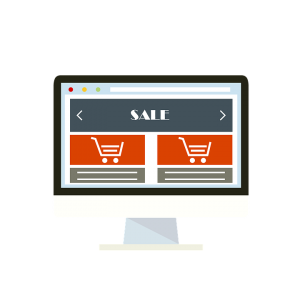
But did you hear what I said in the middle of it? They have probably what? Done their research online. Then they’re ready to buy, just trying to decide who to buy it from. Well, the other type of customer that’s out there is the one who doesn’t yet know exactly what they want to buy.
They certainly don’t care yet about who they’re going to buy it from. They want to learn more. They want to be informed. They want to know enough about that product or service so that when they do start making inquiries, they don’t look like an idiot. Two different types of customers. Now the authority content, that deals with that first percentage of people. It deals with all of those people, the 80% who have yet to make up their minds about what they want and what do they need and all the options and the different things and not feel like an idiot.
Now I’m ready to make the call, okay. And then they fall into the 20%. “I’m ready to buy. I’m ready to go.Who do I buy it from?What are you going to offer me to buy it from you?” And here’s the thing. If you don’t have any sales content on your website, pow-pow, you’re not going to stand a chance against someone who has.
So sales content is incredibly, incredibly important on any website. And the third type of content that we have that we’re talking about today is micro-content. Micro-content expands on a single point. It’s like a blog post, for example. It’s like an image, a graphic that you would share to social media.
It’s about one particular point. It’s to answer one primary question, one primary thing. Hey, if they want more information, link them to the authority content. If they’re looking for a particular product, link them to the sales page. All of the types of content work together to develop a lead, because it should work like this.
Someone wants to buy something. They go looking online. Google delivers to them what Google thinks will answer their question. So you need to do that. Depending on where in the buying cycle they are, Google will deliver different content to them. But when they arrive on your website, even if they are still just looking, they want to be able to look through and read more information and then go, “There’s the product that I’m looking for.”
And because I believe them, because I trust them, because they’ve added value to my time in the searching of it through their what, content, that’s where the win takes place. So understand those three different types of pivotal content points – authority content, sales content, and micro-content.
Content Formats
Next on our list is the different types of content formats. Now this is how we actually present the content. So there are five different things in this list. I want you to take some notes.
Number one is, of course, written content. It’s the easiest one. We sit there, we type, we do something. It’s written. It’s our blog posts. It’s our content pages. It’s our newsletters.
It’s what we grew up with at school. It’s what people go online to read and learn. But it’s not the only type of content. The thing is because it’s the easiest type of content to prepare, it’s the most frequently used one out there. Well, number two on the list is where we need to take things up a level and get into our visual content using infographics and social quotes and featured images and making the images on our website and in our social media and in our newsletters and our print media and wherever else it is that we’re using these things, we need to make them stand out.
We need to go above and rise above the bar of what our competition are doing. We need to explain what would normally just be written also in a visual manner. Number three is audio and video. It’s what I’m doing right now as I record this video. I’ll extract the mp3, and there’s a podcast.
So there’s already both audio and video. I’ll get a transcript, and there’s some written material as well. But it’s podcasts. It’s your YouTube channel. It’s interviews with experts or customers or industry-related topics in your business, all of these different things that can present another angle on the topic that you’re already writing about.
Now, number four is one of my favourites, and it’s often the scariest for many different people. And that is the live factor. It’s going live on social media, or running a webinar, or maybe even a seminar, oh, boy, or a workshop. Imagine that. But you can create content from these things.
What I’m trying to say is don’t just get stuck in the rut of typing and writing and people reading. There are so many different things that you can actually do to present your message. And the more that you do, the more authoritative you become, and the more, what’s the word, the more people are going to just trust and love and believe and have faith in you.
You know one of the things I really love about the video content that I do? People get to know me. I mean, you’re looking at me right now going, “I’ve never met you. I don’t know you.” Maybe, but you watch a number of these, you’ll get to see my personality coming out, and you kind of feel like you know me. And I have literally had people come up to me in the street, not just around town locally, but also when I’m traveling interstate and running seminars and selling as well, people come up to me and they just start talking to me.
It’s like they know me and I’m freaked out, “Whoa, dude, stalker much?” No, not really. But the point being, if they feel that they know you, you might have heard this before, if they know you, they trust you, and they’ll buy from you. Here’s the key. If they feel like they know you, they don’t even have to know you, but if they feel that they do, they will trust you and they will buy from you over someone who they don’t have that kind of connection with.
So that’s the benefit of all of these. Anyway, number five on our list of the different types of content is interactive content. Look at using quizzes and surveys and contests and all these different things that you can use to engage people to respond, not just to watch, not just to read, not just to look at, but to answer, to work with.
These are the different types of things that you should be looking at. So I’m going to ask you to be interactive for me just one moment. I’m going to listen for this, ask you a question. I want you to answer back. Did you just write that list down? Most of you said no. Why not?
All right, the smart ones are going to go back to the infographic and just bullet point it from there, yeah? Print that one out. Hey, why not? Or maybe you’ll download one of the PDFs that’s going to come with this particular presentation part of the whole engagement format. Okay, I get that. But I want you to take notes. I want you to learn from this, and then I want you to actually take up the Nike philosophy and just do it.
All right. So they are the different content formats that you can present your message in. Stretch outside yourself and start doing something new, because that’s what it takes to build and grow a business.
Plan Your Goals For The Month
So here’s a good question. Where do we start? I mean, there’s so much to do, isn’t there?
Not really. I’m going to show you how to break it down piece by piece. And here are the steps along the way of making this content strategy work for you. Number one, I want you to set your primary goal for the month. So have a think about that. What is it? Is it a subscription to your newsletter maybe?
Download Our PDF Content Strategy Guides
Maybe you just literally want to build up your likes on your Facebook business page, of which you should have at least a minimum 500. Good goal. Or maybe it’s going to be content views of a particular sales page. “I want to get a certain amount of people to at least look at that page.” And then conversions or sales. What is your primary goal?
You have to, as Stephen Covey said, begin with the what? The end in mind. So you need to look at it from the perspective of going, “This is my goal here. I need to do everything to bring people to that point.” So that’s the first thing. Number two, make sure you can track your results.
Use Google Analytics. Use your event-based and action goals. Actually set up some means of tracking not just how many people get to the end goal, but the steps along the way as well. That’s important. You need to know what’s working. So if you’re sharing some content on social media around topic A to get people to page B, you need to know how many people, one, looked at it, two, clicked through to the page, and then took action.
You must be able to track and measure your results. And then number three is connect in your conversion funnel. Look at it. Visualize it. Imagine it. They go from here and they link directly to the conversion point, from the content piece to the sale, to the lead, to the contact form, whatever it is.
Visualize the steps that your customer is going to have to take. Now, let me just pause on that just for one moment and make this comment. I do not want you to go and buy some stupid sales funnel system that has this, this, this and a curl back to this.
It needs to be simple, people. I don’t know how else to explain it. It has to be simple. Keep it simple. You know the saying. The KIS principle, keep it simple, please. It will make things so much easier.
Use remarketing and retargeting if they don’t buy and they don’t complete the end thing to bring them back. Good enough. If you’ve done your job with the right kind of content in the right place, the sales will come through because the content builds trust. It builds love. It builds faith and belief in you as a service or product provider.
Content Summary
Now I want you to start thinking about and preparing and summarizing what your content will be. I want you to answer these questions.
Sit down with a piece of paper, map this out. Throughout the coming month, how many blog posts are you going to publish? Is it one, two, three? How many can you do? Plan it in. What will their headings be? So how many images will you need not just for the blog post, but also supporting micro-content for social media, for the newsletter and so on?
How many different images will you need? What about live events? What can you do there as well? I want you to sit down, grab your pen and paper and map these things out. So here’s a real-time example of how this can work. So I’m putting together this new blog post right now. This video will become a blog post.
It is my only blog post for the month, because I spend quite a bit of time on these with an infographic, a transcript, and blah, blah, blah, blah, all the different things that put it together, just the one. But I’ve got a whole bunch of other blog posts related to content on my website. So I’m actually going to republish, I think, three.
Three of those over the next month will also be republished. Then we’ll link back to this big one. This big one will link to our marketing packages on our website. So that’s the blog post. How many images? Well, I need one image for this blog post. I need one image as the feature image for the video which goes onto YouTube.
I’m also going to need — let’s see, there are nine different slides –so nine other images which will go out to social and be used for the micro-content. I’m going to break this video up into nine different pieces so each of those images will go with that as well, because sometimes I’ll share just these four to five minutes and say, “Come back to watch the entire thing.”
So that all goes up onto YouTube. And then I share. I’ll share the summary at the very, very beginning, which will have, hopefully, the bullet points for the entire piece. I’m also going to get an infographic put together, which will cover all of these different pieces. Now I’ve got all of those images which can be shared not just once, but re-shared two or three times through the coming month to social media.
All I need to do is sit down and map it out. I need this, this, this, and this. And then what about live events? Okay, I can book that in, can’t I? I could run a webinar simply on the creation of video. Now I haven’t and I’m not committing to this just yet. I could run a webinar just on using Canva for social.
But see, here’s the reason why I actually won’t be doing that, because if I’m to teach someone how to do that, well, that’s taking away from my business. That’s work that my staff do for our customers. So I won’t be teaching anyone how to actually do that. But what I may indeed do is say “Quick Tips Tuesday.” Each Tuesday, jump online, quick Facebook Live, and I’ll talk about one element, one aspect of content and say, “Hey, it’s live, but come back and watch the entire thing for the blog post.”
All I did was sit down and plan it out. So you need to do the same kind of thing. Sit down and plan it out so that then you know, before we go to the next step, exactly how many content pieces you need. And that is key to getting things done. Okay, so we’re almost there.
Schedule Your Publication Dates and Times
Now we know what content we need. We know how much of it we need. We need to look and plan when it’s going to be published. So grab your diary or use the PDF, which I’m giving you as a part of this blog post.
Use a monthly calendar and color code the different types of content. So you’ve got your video content or your audio content. When is that going up to YouTube? When is it being added on to the blog so there’s the text content as well? And the images out to social, when are they physically going to get posted? And when you’re in there, do this as well, particularly through your social and through your newsletter, for example, is make sure you also include some direct action sales requests as well.
I mean, you’re telling your people that this is the topic, this is the content about this product or service. Ask them to come and buy it from you also. Ask them to come and take a look. At least make your content work for you. Don’t just wait for people to go, “Hey, this is good.I think I’m going to buy from them.”
No, ask them to. You have to ask. If you’re not yet asking people to take action and make a decision and at least find out why they won’t, you are missing out on at least, at least half of the sales volume you could be enjoying this year. So I want you to start mapping things out on a calendar and color code the different types of content.
And why would you do that? So you can look then at the bigger picture. Look at your whole month ahead. And let’s say it’s the 10th or the 15th of this month. I’m not doing that for this month. I’m doing that for next month. So I can see in advance what I need to be doing, what work I need to prepare, which, of course, also leads to the fact that you do need to book in and schedule the creation of such content.
Don’t just think that you can create it and publish it on the same day unless you’ve got nothing else to do. I certainly can’t. I need to plan a month in advance at minimum to make sure everything gets done. Chances are you need to do the same. But you sit down and you map this out, and it probably takes about an hour.
But sit down 60 minutes, 90 minutes, map it out, color it down, plan it ahead, and then you’re ready for the next stage.
Get Help If You Need It
And the next stage of course is what? It’s the Nike principle — Just Do It.
All right, get out there and do it. You absolutely have to and get help if you need to as well. The more you can create in advance — I want you to take note and remember this — the more you can create the content itself in advance, the easier it will be for you to actually do this. I’m not recording this video right now because I want to publish it tomorrow.
Oh, hell no. This is going to get published next month. I’m getting ready for next month, because once this is finished, then there’s the images, then there’s the transcript, then there’s the planning, and then there’s the scheduling and bang, it all comes together as one. You cannot possibly think it’s going to be created and published on the same day.
And that’s the problem that I see most people making. I don’t want you to do that. Hence why I’m giving you some downloadable PDF planners as a part of this overall content strategy. I want you to download them. I want you to duplicate them, print off a number, and then actually use them by hand. Write the thing down.
Get use to it. Get some kind of tangible thing happening. So when it comes then to actually publishing them, I want to use both the live, which is physically you doing it, but also the automated scheduling tools. Don’t just rely on one or the other. Use them both. That’s important, especially with Facebook, for example.
Sometimes it likes the auto scheduling tools. Sometimes it really doesn’t. So you need to do both. I just set a little simple tab reminder every sort of two or three days, push something else to social. And that’s as an absolute minimum, an idea, a new something. But my schedule that I’m planning out, that I’ve mapped out, on this day I wake up, I look at it in the morning and go, “Ah, I’ve got to publish this today.”
And how long does it take, really? 10 minutes, 5 minutes, maybe 15 minutes across all platforms maybe? Not hard to do. And there is a key to making this work. Write this down. Please just write this down. You’ve got your plan.
You’ve got your schedule. How do you get it done? Well, you just do it. Yes. But you have to become — this is what I want you to write down — obsessively reliable. Obsessively reliable. Just like you know you need to be there, like an appointment with a new customer.
You need to be there. That’s the key to getting things done.
Review And Record Your Goals
We’re almost there. Are you ready yet? Do you feel maybe a little motivated? Time to get going and get that new content out? Great.
Well, here’s what I want you to do next. And this is key. I want you to stop halfway through the month, at least a little bit each week, certainly at the end of the month and review, and then notate and record your goals. You’ve got your goals. You know what they are. You set them up earlier. Yes?
Well, now each week, look at both the weekly and the monthly top level goals and the statistics of how did you go? So put together a very simple little spreadsheet, map out what you did, and you’re going to be doing this every single month, so it’s good and easy to set up. Map out then how you did and then map out what the results were.
Take note of what works. Take note of what doesn’t work. This is vital. You can’t just go into your marketing and put your marketing hat on and go, “Yep, I’m ready.How did it go? Karen, how did we do?” No. Karen’s not paying attention. How did we do?
It’s up to you. Now if you have someone doing the reporting for you, great. But make sure you get it. Make sure you understand it. And look at those numbers because that’s how you improve for the next time. Tiny little quick tip right there. So, so important that you do that.
Set Up Systems To Repeat
And then lastly, right at the very, very end we’ve published our content. We’ve looked at our results. We’re getting ready for the next month. What should we do now? How do we make this system work for us? It’s really quite easy.
We look at it, we rinse through it, we repeat, and then we systemize. Now if you know what’s working for you, and you know what’s not, here’s my best suggestion. This is easy stuff. Everyone gets this one right. What should you do with what’s working and what’s not? Well, for what’s working, do more of it. For what’s not, either fix it or do less.
Easy stuff, isn’t it? But some people, for some reason, keep doing the same thing over and over again and expecting different results. What’s with that? I don’t understand. That doesn’t make sense to me. I think there’s a saying about that, isn’t there? But you need to look at some way that you can systemize that.
So here’s the good news. Quality content, evergreen content can be and should be re-shared every, let’s say, 9 to 12 months. It gives it the time to get out of people’s heads and then back in, which means do you need to keep doing this forever and a day? No, you do it for 6 months, for 9 months, maybe for 12 months, and you get better at it as you’re going, but then you start to re-share.
And it takes a lot less time to re-share than it does to create from scratch. I also want for you, as the business owner, to become the planner, not the creator. It takes too long. I said that at the very beginning. It takes too long to create quality content.
So you plan. You look at the top level, high end goals. You look at the numbers and analyze what can we do better? What shouldn’t we be doing so much of? But then let others do the creation of the actual content, because that’s the bit that takes the time. Can you do that for me, please?
It’s the most important thing. Just put it together but let someone else do it. So that, of course, begs the last question. Who? Who can actually do this for you? Well, I’ve got two choices for you. Very simply this.
Number one, go out there into the www and start looking for people and asking people and try to find someone that you trust who will do all of this for you. Or two, just give us a call. Seriously. I love to work with people here in Australia. I’ve got clients all around the country. Yes, I still have some clients overseas, but I love focusing now particularly Southeast Queensland, East Coast Australia as I’m traveling, absolutely.
Give us a call. Drop me an email. Send me a note through the contact form at paulbarrs.com. What you really want to do is engage an experienced team to implement these strategies and these actions for you, because this is just the content. You can plug that whole thing into an overall marketing system. We spoke about that actually last month.
So there’s my top tips for you on creating a dynamic content strategy. Thank you so much for making it this far. I hope you’ve enjoyed this, that you’ve gotten some great notes, that you’re ready to go ahead and do this now to take action. My name is Paul Barrs from paulbarrs.com. We do websites and more.
Give us a call, get in touch, and have a fantastic day, week and month. Talk to you again soon. Bye-bye.

